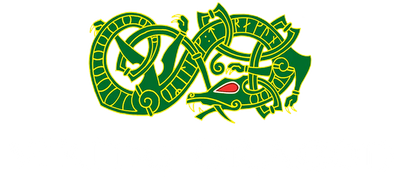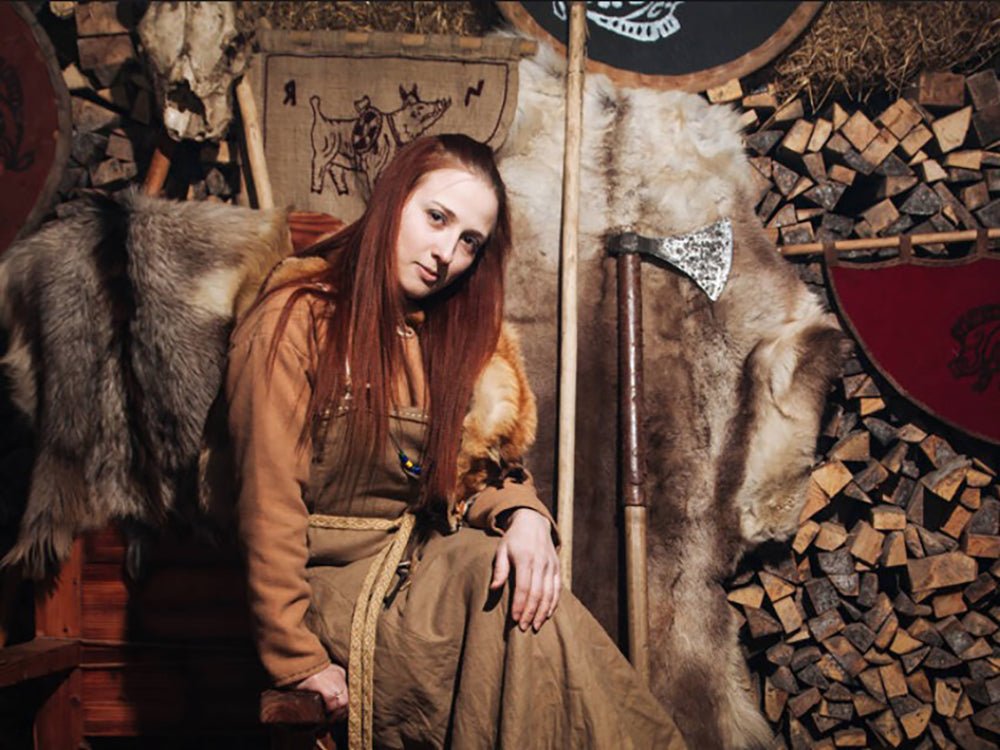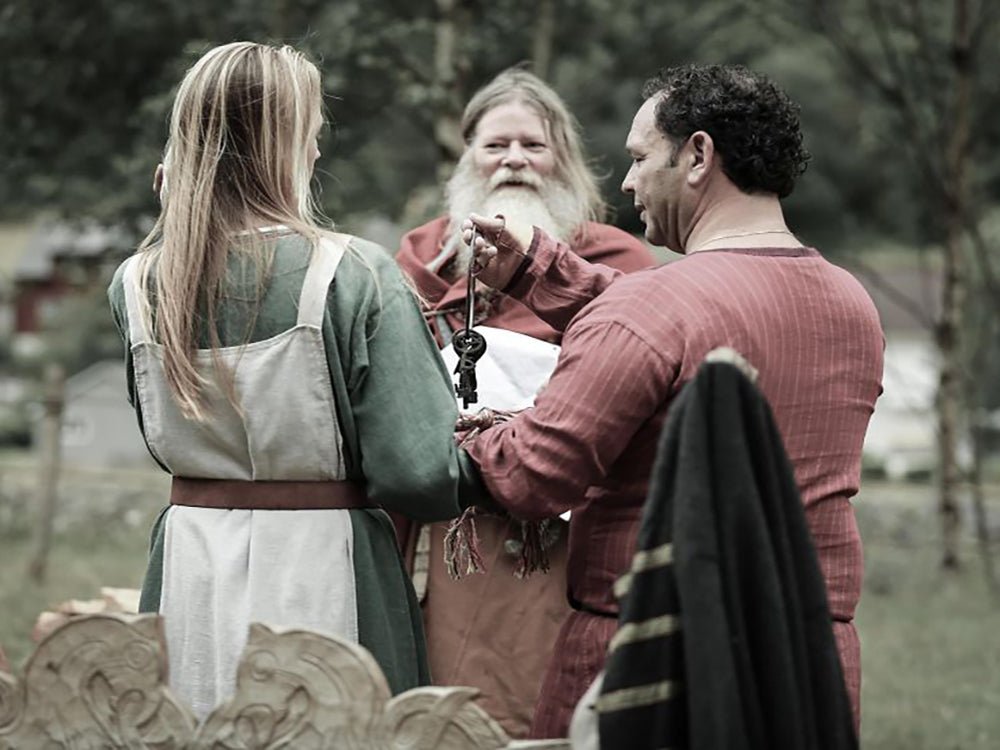Viking Funerals: Beyond the Burning Ship
Picture a blazing ship set adrift into the inky North Sea, carrying the body of some great and noble warlord. ‘Viking funerals’ like these might be one of the first things that you imagine when you think of Medieval Norse culture. Such a powerful mental image does seem befitting of the powerful Viking legacy. However, as stirring a picture as it might be (and as good as it might look on a cinema screen), the ‘Viking Funeral’ was not the flaming longboat affair that’s usually depicted in storybooks.
Unlike what Hollywood might have us believe, we can’t really talk about ‘Viking Funerals’ as a monolith. Practices varied across centuries and regions and between rich and poor members of society. By collecting individual threads of evidence from archaeological sites, sagas and travellers’ accounts, historians have been able to create a tapestry of what Norse funerals probably looked like, and it’s not exactly what you might expect.

The Death of Baldr
Before we talk about what Viking Funerals entailed, let’s get the big blazing misconception out of the way. No, as dramatic as they are to watch in films, Viking Funerals did not involve a longship being set on fire and cast out into the ocean like a floating crematorium. What we’re describing here is the funeral of Baldr, the son of Odin and Frigg. After being murdered by Loki with a dart made from a mistletoe branch, Baldr’s body was carried to the shore on Odin’s horse, where it was laid to rest on a mighty longship named Hringhorni. His wife, Nanna, who died of grief right there on the spot, was laid beside him on a funeral pyre on the decks of the ship. Odin gave his son a gold armband, whispered a few words into his ear, and the flaming ship was sent out to sea.

This is obviously a very powerful story, but it describes the final rites of a God, not a mortal man. Even the funerals of noblemen in the Viking Age would not have included the drama of a flaming longship drifting away from a pack of mourners on the beach. Though popular in stories today, the stereotypical ‘Viking Funeral’ is a work of fiction.

Burials and Cremations
Vikings said goodbye to the body of a loved-one in two main ways: burial and cremation. Cremation was favoured by early Vikings, who believed that the fire’s smoke would carry the deceased’s spirit to the afterlife. Once cremated, the remains were normally buried in an urn. Though the presence of a funeral pyre might remind you of the Hollywood Viking Funeral, in reality, such affairs were strictly land-based.
As the centuries wore on, cremation was gradually replaced with burial as the primary funerary method. Graves varied greatly to reflect the importance of the deceased within the community, ranging from shallow graves for the lowest-class women and children to immense burial mounds for the wealthiest and most powerful Vikings. The largest known burial mound is the North Mound in Jelling, Denmark, which was built to be the last resting place of King Gorm the Old. Measuring over 10 metres high, it would have taken several men several days to build, reflecting the importance of the king and the reverence reserved for him even after death. The late king’s son, Harald Bluetooth, who had the mound built, also had a stake in its impressive stature. After all, any new ruler would want to emphasise his father’s power now that said power had been passed on to him.

Of Boats and Burials
Though Hollywood’s burning longship funerals may be a work of fiction, there is a kernel of truth in what we see on the silver screen. Boats have been found at Viking funeral sites all over Scandinavia, irrespective of whether the deceased was cremated or buried. A respected member of the community during what has been called the ‘burning age’ may have been cremated on a funeral pyre on the decks of a ship, which was then buried beneath a burial mound. When burials became more popular, the body was often laid to rest upon the decks, before the whole was covered by earth and soil. In fact, many of our best-preserved examples of longships have been those found at burial sites. The Oseberg Ship, an immense vessel with elaborate carvings and space for 30 oarsmen, was discovered as the final resting place of two Viking women. Though we don’t know who they were, we can only guess that they were incredibly important religious or political leaders to warrant such a lavish tomb.
Even when the body was not buried with a real longship, the image of a boat could be invoked around their burial mound using what has been called ‘ship settings.’ This practice involved creating the outline of a ship around the grave site using stones or boulders. The largest example of a ship setting is, again, at Jelling. Gorm the Old’s grave was surrounded by pillars in the shape of an enormous longship, measuring 360 metres from nose to tail.

Grave Goods
The vastness of their burial ship isn’t the only reason we know the Oseberg women were wealthy. They were also laid to rest with a treasure trove of riches, including everything from fine ornaments and clothing, to livestock, to sailing equipment.

Grave goods were a staple part of a Viking burial. Medieval Scandinavian were sent off to the afterlife with everything that they might need on their journey, be that practical equipment or fine clothes. Men were often buried with weapons, tools and even gaming sets, whereas a woman’s loot was more likely to include clothes, jewellery and textiles. Animals and slaves may also have been included. In fact, the most famous account of a Viking funeral, found in the diary of an Islamic traveller named Ahmad ibn Fadlan, tells of a Viking chieftain being cremated on the decks of a longship surrounded by food, drink, animals, accessories, weapons and even a female slave to serve him in the afterlife.

Christian Burials
Though King Gorm was originally entombed beneath his enormous burial mound, this would not be his final resting place. When his son converted to Christianity, Gorm was exhumed and reburied beneath Jelling church and a magnificent rune stone with an engraving of Jesus was erected in his honour.
There’s evidence that the elaborate Viking funeral became simpler as Christianity crept across Scandinavia. As the new religion took hold, funerals combined both Norse and Christian practices. Early Christian funerals still sometimes featured grave goods, though these were usually fewer and more practical than the riches of times gone by. Laying the deceased to rest on the decks of a ship also fell out of fashion and burial firmly took hold over cremation as the funerary method of choice. However, it was around this time that rune stones began popping up all over Scandinavia to honour the dead and tell of their achievements, similar to how we might use a gravestone today.



